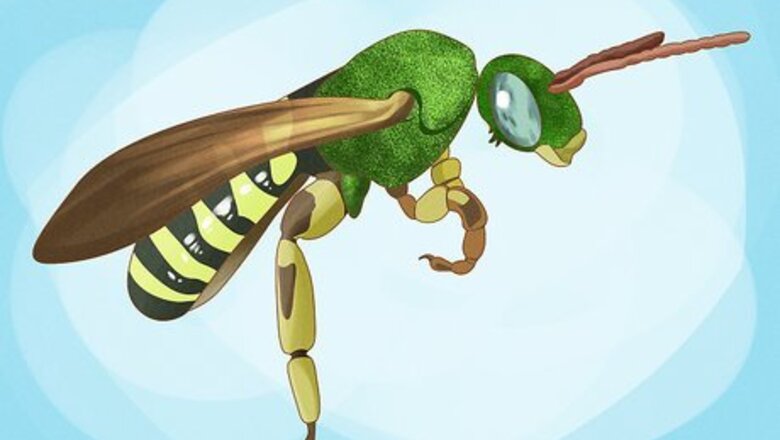
views
What are sweat bees?
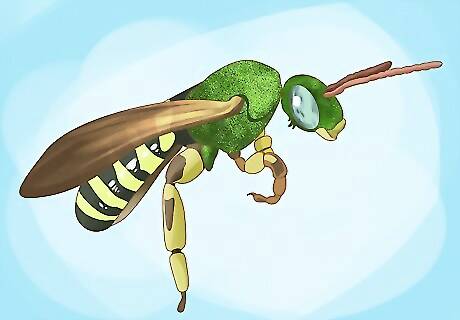
Sweat bees are a type of ground bee from the Halictidae family. Like other bees, sweat bees drink nectar and work hard to pollinate lots of different plants. These bees also really like salt, which is why they tend to hover and land on your skin when you’re hot and sweaty. Sweat bees like to eat the sweat on your skin, but they don’t hurt you by doing this.
Can sweat bees sting?

Female sweat bees sometimes sting people, but it doesn’t hurt all that much. Getting stung by a ground bee is really uncommon—unlike other insects, ground bees tend to avoid conflict rather than sting. If you do happen to get stung, the pain really isn’t that bad. A lot of bee stings happen when someone swats or swipes a bee off their skin. If you notice a sweat bee on you, wait for it to fly away on its own instead of making a move. If you do get stung by a bee, treat the injury by pulling out the stinger with a gauze bandage. Then, clean the skin with soap and water and ease the swelling with a cold pack.
Do sweat bees nest in the ground?
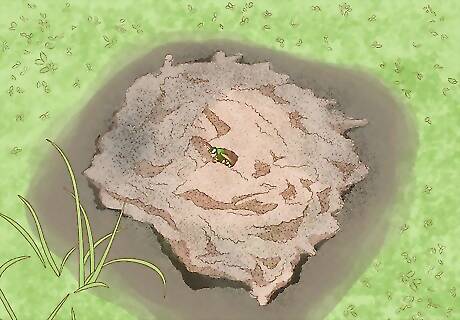
Yes, sweat bees do burrow and nest in the ground. Sweat bees are a type of ground-nesting bee, but this doesn’t make them bad for your yard or the environment. While honey bees live and grow up in hives, sweat bees live and grow up in the ground instead. Sweat bee nests tend to resemble a series of branching tunnels, though a lot of the nest isn’t visible from above the ground. The opening to a ground bee nest looks pretty similar to an anthill.
Ways to Get Rid of Sweat Bees

Take a shower and slip into some clean clothes before heading outside. Sweat bees are more likely to hang around you if you’re dressed in really sweaty, dirty clothes. Before heading outside, change into some clean, sweat-free clothes so the bees are less likely to approach you. Sometimes, bees are also attracted to floral perfumes or body lotions, so avoid wearing those.

Dress in long sleeves and pants whenever you go outside. Sweat bees love sweaty, exposed skin. So, if you head outside in a long-sleeved tee and long pants, you’re giving the bees a lot less real estate to work with. Plus, long shirts and pants can protect you from getting stung.

Head inside when you start to get sweaty. Sweat is an inevitability when you head outside, even if you keep your arms and legs covered up. Sometimes, heading inside and away from the hovering sweat bees is the best way to deter them.
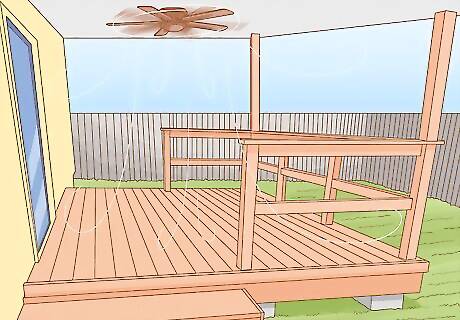
Turn on some fans outdoors. It’s no secret that sweat bees are fans of humidity and sweaty skin. To keep these bees at bay, some gardening enthusiasts have tried placing a few well-placed fans around their patio or garden—apparently, the flow of moving air keeps the bees from sticking around.

Spritz away the sweat bees with bee spray if you’re in a pinch. Bee spray is definitely one of the quickest ways to deal with bees—just a few quick spritzes may help keep them away for the time being. If you don’t feel like using bee spray, try spritzing yourself down with some insect repellant instead.

Set up a homemade soda bottle bee trap near where the bees frequent. Make a homemade bee trap by grabbing an empty 2 L (2.1 US qt) soda bottle and slicing off the top curve of the bottle with a box cutter. Then, flip the curved section of the bottle so it looks like a funnel, and staple it inside the rest of the bottle. Add some sweet bait to the bottom of the bottle, like a squirt of honey, and hang the trap up somewhere the sweat bees hang out. To hang up the bottle trap from a tree branch, simply cut 2 holes along opposite sides of the bottle. Then, loop and tie some string or wire through these holes. Secure the trap with clothespins instead of staples if you’d prefer to release the bees later on.
How to Prevent Sweat Bees
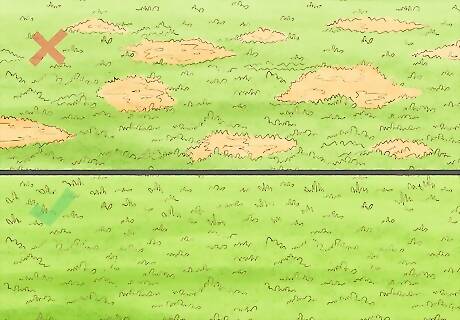
Grow lots of grass and plants so sweat bees can’t burrow in the soil. Ground bees (like sweat bees) really thrive in sandy and dry patches of soil. When you cover your yard up with grass and other types of plants, the surrounding sweat bees won’t have enough real estate to build their nests. Steer clear of planting flowers like sunflowers and asters, though—sweat bees really love these blossoms.
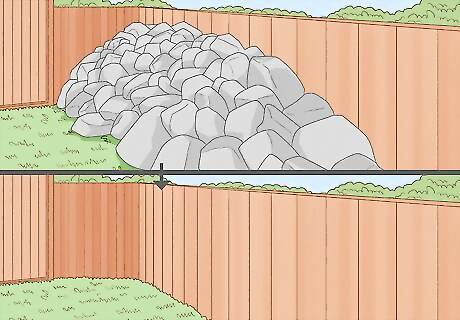
Take apart any brick or rock piles lying around your home. Sweat bees usually burrow and nest in the soil, but they’ll build a nest in a pile of rocks or bricks if there’s nothing else to work with. Take a walk around your lawn and clear away any mounds of rocks, bricks, or pebbles that could double as a potential home for sweat bees.

Nourish your lawn with plenty of water. As much as sweat bees love drops of perspiration, they aren’t big fans of damp or wet soil. Set up a sprinkler system or frequently water your lawn to keep it too damp for any sweat bees to set up camp. Generally speaking, it’s a good idea to water your lawn about 2 times each week. With any luck, the bees will quickly get the hint and leave your yard alone.
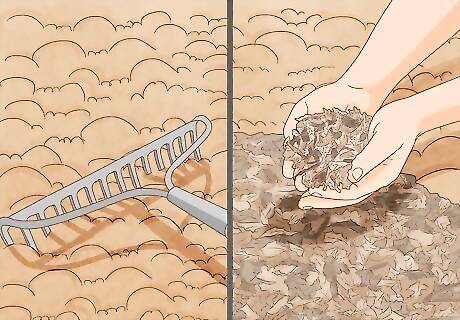
Till and mulch your soil so it’s less appealing to sweat bees. Sweat bees are big fans of dry, sand-like soil, but don’t really like much else. Till the surface to make it undesirable for any neighboring sweat bees, and sprinkle. Then, cover any gardening areas with mulch so the bees have a tougher time nesting there.
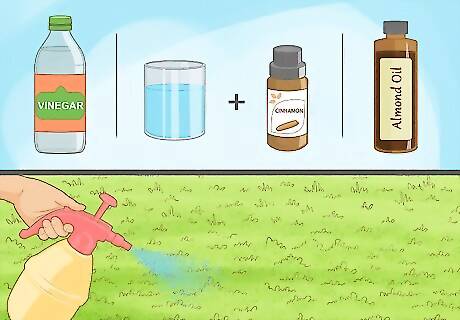
Try a natural repellent. While not guaranteed to work, you may have success in keeping bees away with vinegar, cinnamon mixed with water, orange oil, or almond oil.
Should you kill sweat bees?

No, experts don’t actually recommend killing sweat bees. Although their grounded nests can be really annoying, sweat bees play a really important role in the pollination process. These insects may be pesky at the moment, but they help the plants and crops to grow and thrive. Contact a company that does live bee removal to get rid of the sweat bees if you're determined not to have them around your home. Some people suggest killing ground bees with gasoline, but this isn’t a good idea. Not only is gasoline terrible for the environment, but it also creates a giant fire hazard on your property.












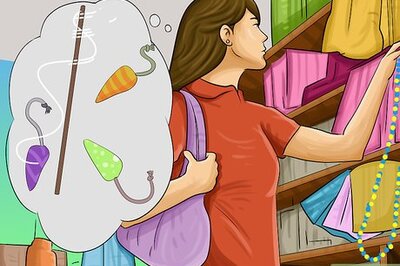
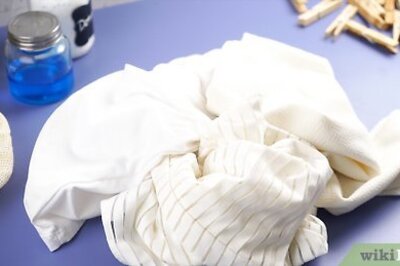




Comments
0 comment